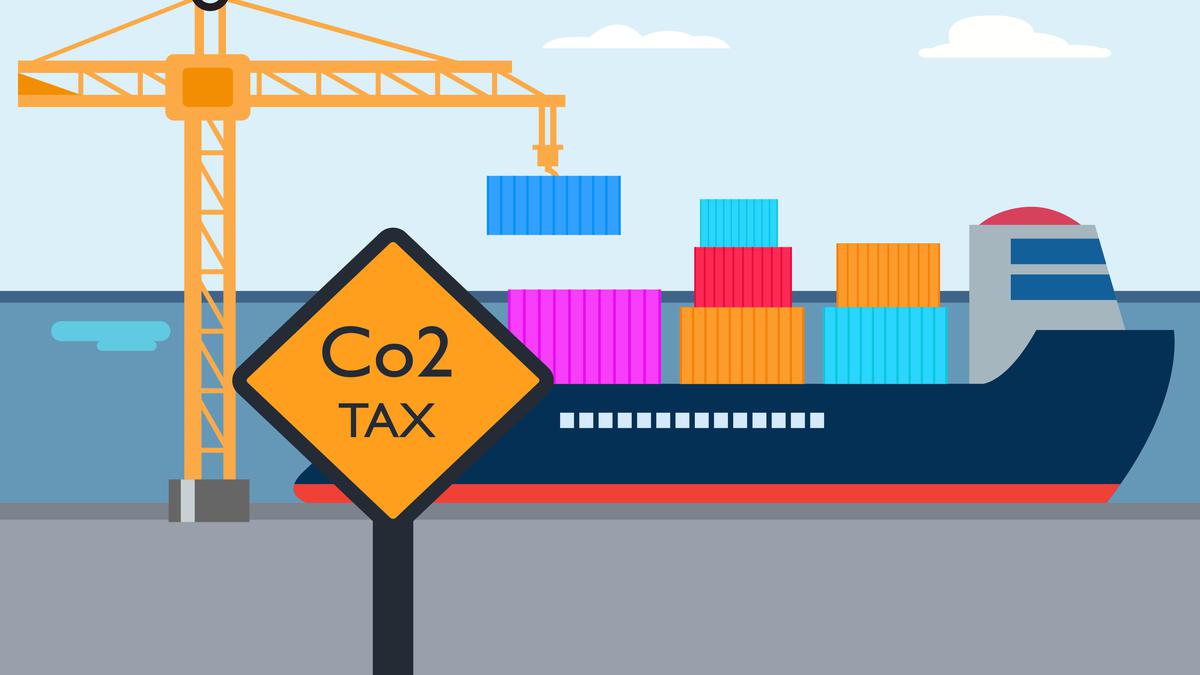
Explained | What is the EU’s carbon border adjustment mechanism? Premium
The Hindu
Understanding the EU’s new carbon tax where producers will be taxed for the carbon emissions emitted in their production process
The story so far: On May 10, co-legislators at the European Commission signed the Carbon Border Adjustment Mechanism (CBAM). It has been described as a “landmark tool” to put a “fair price on the carbon emitted during the production of carbon intensive goods that are entering the EU, and to encourage cleaner industrial production in non-EU countries.” The reporting system under the regulation would be enforced from October 1 for certain goods to facilitate a smooth roll out and dialogue with third countries. Importers would start paying the financial levy from 2026.
Its primary objective is to avert ‘carbon leakage’. It refers to a phenomenon where a EU manufacturer moves carbon-intensive production to countries outside the region with less stringent climate policies. In other words, replace EU-manufactured products with more carbon-intensive imports.
From 2026, once the CBAM is fully implemented, importers in the EU would have to buy carbon certificates corresponding to the payable carbon price of the import had the product been produced in the continent, under its carbon pricing rules. Conversely, if a non-EU producer is paying a price (or tax) for carbon used to produce the imported goods, back home or in some other country, the corresponding cost would be deducted for the EU importer. The Commission, in coordination with relevant authorities of the member states, would be responsible for reviewing and verifying declarations as well as managing the central platform for the sale of CBAM certificates. Importers would have to annually declare by May-end the quantity and embedded emissions in the goods imported into the region in the preceding year.
The idea here is to avert the possibility of carbon leakage alongside encouraging producers in non-EU countries to green their manufacturing processes. Moreover, it will ensure a level playing field between imports and EU products. This would also form part of the continent’s broader European Green Deal which endeavours to achieve 55% reduction in carbon emissions compared to 1990 levels by 2030 and become a climate neutral continent by 2050.
Yes. The gradual introduction of the CBAM would be in parallel with the phasing out of the allocation of free allowances given out under the EU Emissions Trading System (ETS), which was also aimed at supporting the decarbonisation of the region’s industries.
The ETS had set a cap on the amount of greenhouse gas emissions that can be released from industrial installations in certain sectors. Allowances were to be bought on the open decentralised ETS trading market; however, certain allowances were given out for free to prevent carbon leakage. Though effective in addressing the issue of leakage, the EU concluded it dampened the incentive to invest in greener production at home and abroad. This was because of the tendency to rely on free allowances to meet operational requirements and obligations. Thus, the idea to have an import-based tariff instead.
CBAM would initially apply to imports of certain goods and selected precursors, whose production is carbon-intensive and are at risk of ‘leakage’ such as the cement, iron and steel, aluminium, fertilizers, electricity and hydrogen sectors. Eventually, once fully phased in, it would capture more than half of the emissions in ETS covered sectors.

Adani Krishnapatnam Port handles 5.85 MMT of cargo in June, sets record for second consecutive month
Adani Krishnapatnam Port achieves record-breaking cargo volume, cements position as leading logistics hub on India's eastern coast.





















 Run 3 Space | Play Space Running Game
Run 3 Space | Play Space Running Game Traffic Jam 3D | Online Racing Game
Traffic Jam 3D | Online Racing Game Duck Hunt | Play Old Classic Game
Duck Hunt | Play Old Classic Game










